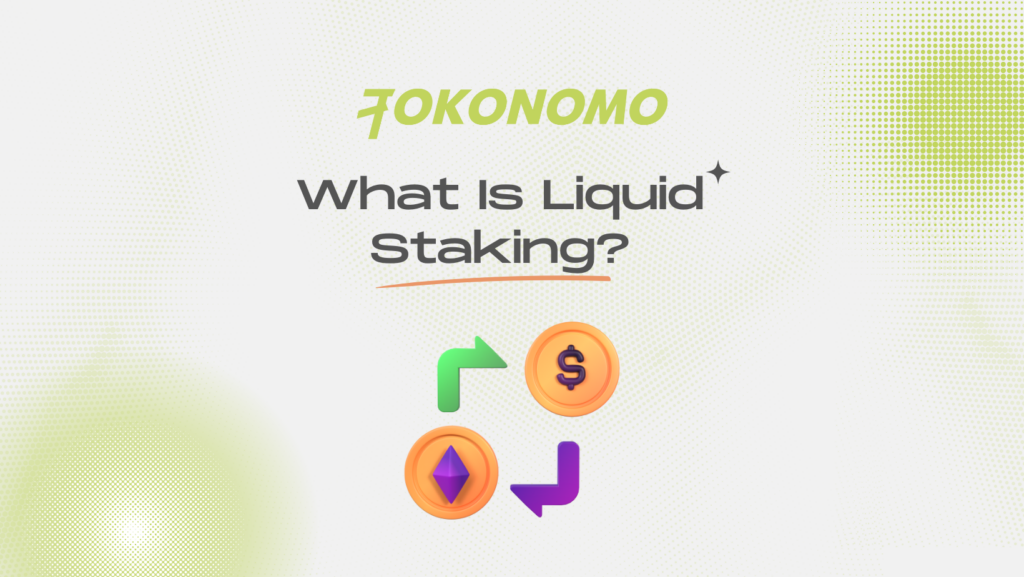Liquid staking stands out as an innovative concept enabling users to significantly amplify the utility of the digital assets they choose to stake. This concise guide delves into the foundational principles of liquid staking, elucidating its mechanics, elucidating its significance, examining its advantages and disadvantages, and elucidating its points of differentiation from alternative staking methods.
What Is Liquid Staking and How Does It Work?
In brief, liquid staking can be described as the tokenization of staked assets, representing a more advanced iteration of traditional staking methods.


Traditional staking entails the locking up of assets on a Proof of Stake (PoS) blockchain in exchange for potential rewards while aiding in network security. However, this approach often involves a compromise, as staked assets tend to lack liquidity during the staking duration.
Liquid staking tackles this liquidity challenge by introducing a mechanism where participants obtain liquid staking tokens (LSTs) in return for their staked assets. For instance, when staking ETH through a platform like Lido, individuals receive stETH tokens in exchange. This enhancement provides greater utility to staked tokens, enabling users to reap staking rewards without sacrificing liquidity.
What Is the Significance of Liquid Staking?
Addressing the liquidity challenge inherent in traditional staking, liquid staking enhances users’ flexibility and accessibility to their staked assets significantly.
Platforms such as Lido extend users the chance to tokenize their staked assets into LSTs, enabling them to engage in free trading, integrate with decentralized finance (DeFi) platforms, or employ them as collateral, all without the need to await the conclusion of the staking period.
Moreover, liquid staking plays a pivotal role in fostering the expansion and acceptance of blockchain networks, enticing increased engagement from users who might have previously hesitated to commit their assets for prolonged durations.
Advantages and Disadvantages of Liquid Staking


Advantages
- Augmented utility: Users can leverage their staked assets in various DeFi applications, all while retaining their entitlement to staking rewards.
- Minimized opportunity cost: Through liquid staking, users can capitalize on prospective trading and investment prospects using liquidity that would otherwise remain inaccessible in conventional staking approaches.
- Boosting cryptocurrency adoption: Liquid staking has the potential to amplify token utility and worth, thereby nurturing the emergence of novel applications and stimulating the adoption of cryptocurrencies.
Disadvantages
- Mitigating the risk of slashing: Dishonest validators within the network face potential removal and subsequent slashing of a portion of their staked tokens. Additionally, users run the risk of exposure to slashing incidents should their selected validators incur penalties.
- Addressing concerns regarding centralization: The decentralization ethos may suffer if a predominant portion of tokens is staked within a singular protocol, accompanied by its exclusive set of validators. A diverse ecosystem of liquid staking protocols is recommended to alleviate the risks associated with centralization.
- Navigating regulatory uncertainty: The landscape of blockchain and cryptocurrency regulation undergoes continual flux, exhibiting significant disparities across various jurisdictions. Before engaging with liquid staking and DeFi platforms, it is imperative to conduct thorough checks on local regulatory frameworks.
Liquid Staking vs. Liquid Restaking
As previously discussed, liquid staking involves the process of tokenizing staked assets, thereby facilitating liquidity and flexibility, eliminating the need to wait for the staking period to conclude. Liquid restaking, pioneered by EigenLayer, pushes this concept to new horizons.
While liquid staking primarily concerns staked assets that contribute to the security of a PoS blockchain, liquid restaking broadens the scope by extending security measures to oracles, rollups, and various other “external” modules and systems. Noteworthy examples of liquid staking projects encompass Lido, Binance ETH (BETH), and Rocket Pool (RETH). On the other hand, exemplars of liquid restaking initiatives include ether.fi, Puffer, and Kelp DAO.
Conclusion
Liquid staking introduces users to a significantly more dynamic and flexible method of engaging with staking ecosystems. Through the process of tokenizing staked assets and augmenting liquidity, liquid staking broadens the horizons for digital assets, paving the way for innovative opportunities.











